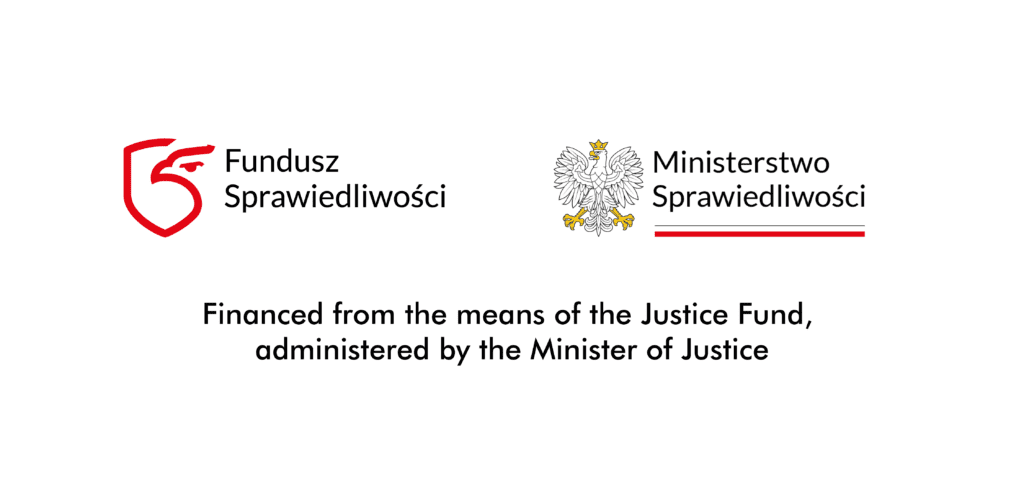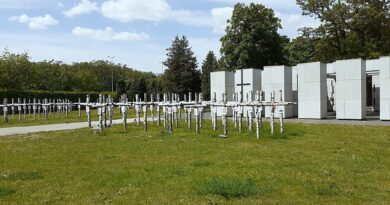Accelerated transformation of the Polish armed forces – “We have begun to build something unprecedented in any European country.”

A conversation with security expert Professor Piotr Grochmalski on the modernization of the Polish Armed Forces, arms contracts, and threats from the East. Professor Grochmalski was speaking to Karol Gac for Sovereignty.pl.
***
Professor, Poland is on the point of having a new government. Soon, the Polish government will most likely be formed by Donald Tusk’s Civic Coalition, the centrist Third Way alliance and the New Left alliance. For the past eight years, the United Right coalition led by Law and Justice (PiS) has been governing Poland. How has the military changed over that time?
Before I answer that question, it is worth saying a few words about the point from which the last government started out. Let us remember that on April 10, 2010, the entire command of the Polish Armed Forces perished at Smolensk. It was an absolute shock. Never in the history of the Polish state had such a situation occurred, and yet for example we took part in World War II, where we were the fourth Allied army. In Smolensk, we were dealing with what some observers saw as a signal of an ongoing confrontation with the Russian Federation. To this day, there is a whole series of ambiguities about this event. In addition, a belief is beginning to prevail, built on the basis of collected documentation, that we were then dealing with an aggressive element of the Russian Federation’s policy toward the Polish state. A year later, there was a very significant change from the point of view of the Polish army.
What kind of change?
Its reduction, primarily in areas in the east of Poland, i.e. along the border with Belarus and Russia. It is also worth noting the importance of the liquidation of one division, crucial for the security of the Polish state, which was to defend the so-called Brest Gate and block the possibility of strikes against the country’s capital. As a result, there was a reduction from four divisions to three, which was absolutely unprecedented. After 2010, there was a dangerous trend of disarming the army’s deterrence potential and reducing key parts of the Polish Armed Forces. By comparison, at the same time the Russians were conducting, for example, nuclear attack drills on Warsaw. We should also have in mind that Vladimir Putin has reconstituted the 1st Guards Tank Army, which is part of the military district aimed at attacking Poland. This army would have entered Poland like a knife through butter and would have reached as far as Poznań [in Western Poland], because there was actually no real barrier that could have stopped their strike.
The reduction of the military carried out under the coalition government of [Donald Tusk’s] Civic Platform (PO) and the agrarian PSL party violated fundamental provisions of the Polish Constitution, such as Articles 5 and 26. The military is supposed to guarantee the integrity of the state, which means that the government has an obligation to maintain a defense capability that is capable of accomplishing this. Meanwhile, at the time, our Armed Forces were incapable of meeting this duty because they just did not have the necessary power. This was the starting point for the United Right in 2015. So we had a massive reduction in defense capabilities, no real modernization of equipment, and a country exposed to a military strike in the key direction from which Russia has always struck the West.
You have outlined the starting point of 2015. But the United Right came to power at the time preaching, among other things, the need to modernize the Armed Forces and reverse the policies of the PO-PSL coalition. Has it been successful?
In the first stage, which was very important, the fourth division was rebuilt, bringing us back to square one. All specialists believed that the elimination of this division was something extremely dangerous, including from the point of view of NATO. The first stage of change also included the introduction of a new formation, the Territorial Defense Force. As we remember, this new force was heavily criticized by opposition politicians. However, recent years have shown how much it was needed. It is an additional instrument for conducting territorial defense that can support the Polish army. This was a fundamental breakthrough, as there was a huge discussion around it. When the Territorial Defense Force was created, reference was made to the most important Polish traditions, including special formations and the Home Army, the largest underground army operating during World War II. This also involved building the right ethos. It quickly became apparent that the Territorial Defense Force performed well during crises (such as pandemics) or natural disasters.
Within the budget at the time, the United Right also began developing models that served to put certain things in order. Especially since the Polish Armed Forces, in every dimension, lagged way behind the standards of a modern military. In fact, everywhere we had a situation that was desperate to some degree. In addition, the Polish Armed Forces had equipment that was on the verge of being withdrawn, such as its submarines. There was practically no area that did not require a modernization process to be developed around a coherent concept.
It sounds dramatic. However, recent years have seen numerous contracts and unprecedented spending when it comes to the Polish Armed Forces. In fact, there hasn’t been a month, not to say a week, in which we haven’t heard about new contracts.
That is true. The United Right government began to purchase equipment in various areas. They sought, for example, to build a protective shield, which required the construction of a triad, of which the Patriot, Narew, and Vistula systems, for example, were to be a part. This is all the more important because facilities of strategic importance previously had virtually no missile and air defense cover, which posed a huge risk. Intensive work was also underway on the design of the Krab gun-howitzer, which was one of the most modern designs in the world.
The pivotal point that gave all this a boost was undoubtedly Russia’s aggression against Ukraine and the period immediately preceding it. In its wake, the development of the concept of a strong army, based on modern weapons, accelerated exponentially. A very modern piece of legislation was passed, which not only cleared up certain issues, but also opened the way to increasing funding for the Polish military. A project was created for the Armed Forces to achieve the parameters of what will be, in many respects, the strongest land army in Europe, and we are now close to that point. In terms of equipment and modernity, we have even created a model that has made us a world power in some areas. The United States has green-lighted our purchase of more than 500 HIMARS systems. This is not only more than the US itself has, but even more than it has produced so far. We have supplemented this with the Korean Chunmoo missile systems. Taken together, this gives us a huge potential. These types of missile systems are intended to effectively strike and destroy enemy formations as they approach. This is a gigantic amount of equipment that has very good offensive performance. It is a modern solution that was supposed to fit into the vision of creating a 300,000-strong army. The idea was to create armed forces that would stop aggression on Poland’s borders and prevent massacres of civilians.
After the Russian aggression, the procurement of armaments was accelerated, but everything happened simultaneously, according to the principle of seeking optimal solutions. Let us remember that this was also the moment when a global shopping frenzy took place. A huge number of countries began turning to armament companies for modern equipment, because most of them had outdated armies. In the case of Poland, due to its having an extremely aggressive country as a neighbor, the threat was even greater. After the invasion of Ukraine, we became the only country that borders both the aggressor and the invaded country, which shows the scale of the challenges.
What exactly has changed in recent years?
In addition to missile forces, construction of the Narew system has been accelerated. Importantly, we also purchased state-of-the-art radars to equip these systems, with 360-degree coverage. Previously, four systems had to be used for this. We have also purchased a system that ties together all elements related to active missile defense. Only two militaries in the world have this: the American and the Polish. We are building a shield to defend us from missile and air attacks. On top of that, we have purchased state-of-the-art F-35 aircraft. It can be said that this is actually not just an aircraft, but rather a modern platform that “bundles” defense systems together. In addition, we have ordered Korean FA-50 aircraft, which are “lighter” than the F-35. Because we have transferred a large amount of armored equipment to Ukraine, we have also purchased a significant amount of equipment from two countries, namely Korean K2 tanks and state-of-the-art American Abrams. We produce Krabs, but we have also bought Korean K-9 howitzer systems. We have also purchased the second largest number of Apache attack helicopters in the world. In addition, we have purchased Borsuk infantry vehicles and satellite systems for continuous surveillance. Few armies in the world have such comfort. This shows what huge purchases we have made.
What was the purpose of this?
The development of our armed forces that we have begun is unprecedented in any European country in terms of sophistication and coherency. Importantly, this has benefited the Polish arms industry to a great extent. This is a coherent concept of a very modern army, in adequate numbers. Note that usually the modernization process takes a long time, and Poland was able to have the most modern equipment within a short time. Even the US military would not have such modern equipment across the whole range. At this point, we will have no weak spots. This would be a generational change. In taking this action, we are strengthening our ties with the United States, which increases our security.
You mentioned a modern piece of legislation. The Homeland Defense Act stipulated the construction of a 300,000-strong army, consisting of 250,000 professional soldiers and 50,000 members of the Territorial Defense Force. These figures have sparked discussion in Poland. Recently, former Civic Platform Defense Minister Tomasz Siemoniak stated that Poland does not have such potential. What do you think of this kind of statement?
First, Tomasz Siemoniak’s assessment is dilettantish. Remember that one of the ministers of national defense under the PO-PSL government was psychiatrist Bogdan Klich. This best shows the seriousness with which the Polish armed forces were treated. It is important to remember that these figures are based on demographics and sound analysis. It is not like someone just sat down and wrote down these numbers. It is a serious analysis of what capability is needed based on the scale of the threat, and what level will provide deterrence capability. These armed forces are being built to prevent the outbreak of war. This is supposed to be an element of deterrence. However, in a situation where a former minister is making such public statements, things start to break down. A dangerous signal is being sent out, especially to Russia, that it is unclear what these armed forces will be and whether these contracts will be implemented at all. It is highly unprofessional and it is just not the way things should be done. A serious person must know that he is not a child playing in the sandbox, but that there are Russian analysts checking every statement to choose when to use their networks, for example. The Russians had a very high opinion of the quality of the Polish Armed Forces’ modernization, and they got really hysterical on the media front, including with a statement by former President Dmitry Medvedev.
So what do you expect from the new government? What does the future hold for the Polish Armed Forces?
We are already seeing a general trend, one of convincing Poles that Poland cannot afford such an army as is proposed by the United Right. So we are seeing a repeat of the former PO-PSL government. I also expect what is written in a textbook for the Polish political class, “We are not building the Fourth Reich,” namely an interview with the former German ambassador to Poland. He says frightening and outrageous things, for example that German troops should be permanently stationed in Poland. Let us not forget that in the EU there is a parallel attempt to build a new structure, even a superstate. After all, the key elements there concern defense policy. According to what has been announced, a European army is to be created, which is to be autonomous from NATO, meaning that it will not complement but compete with that organization. According to the assessments of international experts, Poland was becoming a new center of power as far as Europe was concerned, which in turn translated into international policy capabilities. This has all been thrown to the wind. I can hardly imagine that a pro-German team will stand up and implement a project that will increase Poland’s power vis-à-vis Germany and, for example, take away orders from German companies. In the situation we are facing, that is, the conflict in the Middle East as well as aggressive Russian expansionism, playing any kind of game with the military is a coup against Polish security and the Polish people. This is something wildly irresponsible.




